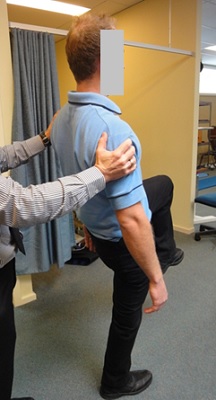QUESTIONS |
1. What is rest in treatment of stress fracture? Walking only? Bike? Swim(in non-extended position)? What can you do? Or is it just not doing the activity that caused the injury?
2. What is considered as rest? Does physiotherapy start after 3 months eg: lumbar mobility, lower limb strengthening. What is the role of repeat x-rays if healing is unlikely?
3. How long do you need to rest with a lumbar stress fracture?
4. What is the best test to diagnose a stress fracture?
5. Are there any treatments to speed up healing of stress fractures?
ANSWER |
Lumbar bone stress injury (pars stress fractures) are common in the adolescent athlete. Any adolescent athlete presenting with persistent lower back pain not improving quickly with rest and standard physiotherapy should be considered to have a lumbar stress fracture until proven otherwise.
The degree of rest required is dictated by each case individually, especially with respect to pain. In most cases cessation of the aggravating activity (such as bowling or running) will resolve pain within a short period of time. As a rule, a minimum of 6
weeks away from this activity is required, but not uncommonly may be up to 3 months depending on the severity/duration of the symptoms. During this time avoidance of positions of spinal extension should occur. From an exercise point of view this leaves stationary cycle for fitness, and addition of swimming at around 4-6 weeks as symptoms improve. Most swimming strokes require lumbar extension and
rotation which can aggravate a lumbar stress injury. Walking is limited for daily activity and not exercise.
If there is more severe pain interfering with activities of daily living, then complete rest may be required until this resolves. Bracing is seldom indicated or used, unless in the context of severe pain.
Physiotherapy can be commenced early in the management of this injury to address lumbar mobility, resolve soft tissue issues and to commence a lumbopelvic rehabilitation program. Rehabilitation exercises can be commenced straight away, as long as they avoid positions of lumbar extension and rotation.
Testing:
- The best clinical test to diagnose pain with a lumbar stress fracture is pain on extension, with the addition of lumbar rotation.
- The ‘stork test’ (single leg lumbar extension) is more specific for this injury.
- A plain X-ray is a reasonable first test but will only show chronic pars defects and a spondylolisthesis. It can also exclude more sinister pathology.
- The gold standard investigation is an MRI scan, preferably with VIBE sequences, which improve the test accuracy.
- Bone scanning is not currently used as commonly as the accuracy is similar to MRI and there is a radiation dose required.
- Repeat scanning may be considered depending on the clinical context. If there is a positive MRI or bone scan, then a CT scan may be performed to stage the bone lesion more accurately. The pars area bone may be affected in a spectrum ranging from normal appearance (true bone stress), to sclerosis and to a bony defect that may be early, progressive or terminal.
- Performing repeat X-rays is generally unhelpful.
- A repeat MRI may be considered in bone stress at around the 12-14 weeks mark to assess the resolution of bone oedema, although typically clinical improvement is the best indicator of healing, with a progressive re-introduction of activity.
- Repeat MRI may be helpful in the context of the elite athlete to co-ordinate a faster return to normal activity, or in cases where the improvement is slow or incomplete. There are currently no alternate methods to ‘speed up’ healing of lumbar stress fractures. Even in the realms of elite cricket standard management with rest, rehabilitation and a graded return to activity is still appropriate. More emphasis is now being placed on preventative strategies such as optimizing the number of deliveries bowled and sessions during the week to prevent overload. In addition, modification of technique issues in fast bowlers needs to be considered.



